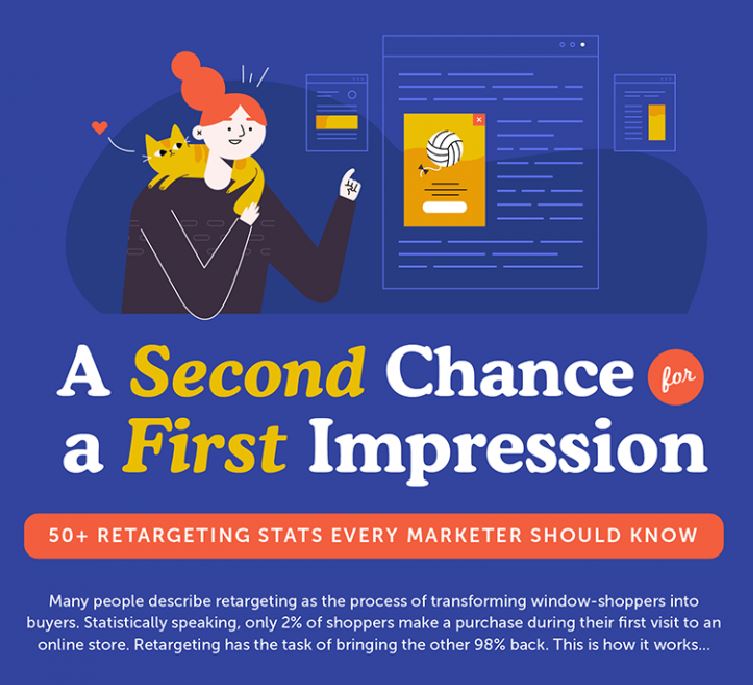Retargeting is the process of transforming window-shoppers into buyers. Only 2% of visitors buy something during their first visit to an online store. Retargeting is a tool that makes it more likely that the other 98% of store visitors will come back.

Here are some important numbers to think about when deciding whether you should adopt retargeting methods within your marketing strategies…
92% of consumers who visit a website for the first time don’t intend to make a purchase.
3 out of 5 consumers are likely to take note of retargeted ads.
Retargeted ads are 76% more likely to get clicks on Facebook than normal ad campaigns.
The average click-through rate for retargeted ads is 7% as opposed to display ads which only yield .07%.
Retargeting results in a 70% rise in conversion rates.
Retargeting, implemented in conjunction with other channels, is 50% more likely to produce sales.
There is a 147% increase in conversions with leads that have come as a result of retargeting.
26% of prospective clients that have been exposed to retargeting return and complete the desired action on the relevant website.
When directly compared to alternative strategies, retargeting generates a 1046% increase in business name searches.
Retargeting clearly has the power to reignite interest in otherwise lost consumers. Check out this marketing infographic for more details:

Source: https://digitalmarketingjobs.io/retargeting-statistics
About John Kremer
John Kremer is author of 1001 Ways to Market Your Books, the Relationships Matter Marketing program, and many other books and reports on book marketing, Internet marketing, social media, and book publicity. -- John Kremer on Book Marketing.

